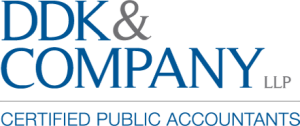
2016 Pension Plan Limitations
IRS Announces 2016 Pension Plan Limitations; 401(k) Contribution Limit Remains Unchanged at $18,000 for 2016
WASHINGTON — The Internal Revenue Service today announced cost‑of‑living adjustments affecting dollar limitations for pension plans and other retirement-related items for tax year 2016. In general, the pension plan limitations will not change for 2016 because the increase in the cost-of-living index did not meet the statutory thresholds that trigger their adjustment. However, other limitations will change because the increase in the index did meet the statutory thresholds.
The highlights of limitations that changed from 2015 to 2016 include the following:
- For an IRA contributor who is not covered by a workplace retirement plan and is married to someone who is covered, the deduction is phased out if the couple’s income is between $184,000 and $194,000, up from $183,000 and $193,000.
- The AGI phase-out range for taxpayers making contributions to a Roth IRA is $184,000 to $194,000 for married couples filing jointly, up from $183,000 to $193,000. For singles and heads of household, the income phase-out range is $117,000 to $132,000, up from $116,000 to $131,000.
- The AGI limit for the saver’s credit (also known as the retirement savings contribution credit) for low- and moderate-income workers is $61,500 for married couples filing jointly, up from $61,000; $46,125 for heads of household, up from $45,750; and $30,750 for married individuals filing separately and for singles, up from $30,500.
The highlights of limitations that remain unchanged from 2015 include the following:
- The elective deferral (contribution) limit for employees who participate in 401(k), 403(b), most 457 plans, and the federal government’s Thrift Savings Plan remains unchanged at $18,000.
- The catch-up contribution limit for employees aged 50 and over who participate in 401(k), 403(b), most 457 plans, and the federal government’s Thrift Savings Plan remains unchanged at $6,000.
- The limit on annual contributions to an Individual Retirement Arrangement (IRA) remains unchanged at $5,500. The additional catch-up contribution limit for individuals aged 50 and over is not subject to an annual cost-of-living adjustment and remains $1,000.
- The deduction for taxpayers making contributions to a traditional IRA is phased out for those who have modified adjusted gross incomes (AGI) within a certain range. For singles and heads of household who are covered by a workplace retirement plan, the income phase-out range remains unchanged at $61,000 to $71,000. For married couples filing jointly, in which the spouse who makes the IRA contribution is covered by a workplace retirement plan, the income phase-out range remains unchanged at $98,000 to $118,000. For a married individual filing a separate return who is covered by a workplace retirement plan, the phase-out range is not subject to an annual cost-of-living adjustment and remains $0 to $10,000.
- The AGI phase-out range for a married individual filing a separate return who makes contributions to a Roth IRA is not subject to an annual cost-of-living adjustment and remains $0 to $10,000.
Other Highlights Include:
- Effective January 1, 2016, the limitation on the annual benefit under a defined benefit plan under Section 415(b)(1)(A) remains unchanged at $210,000.
- The limitation for defined contribution plans under Section 415(c)(1)(A) remains unchanged in 2016 at $53,000.
